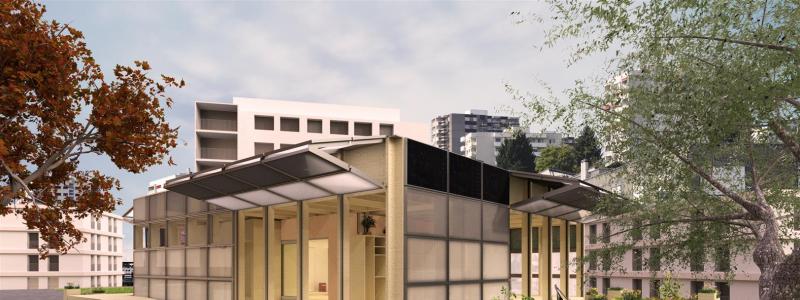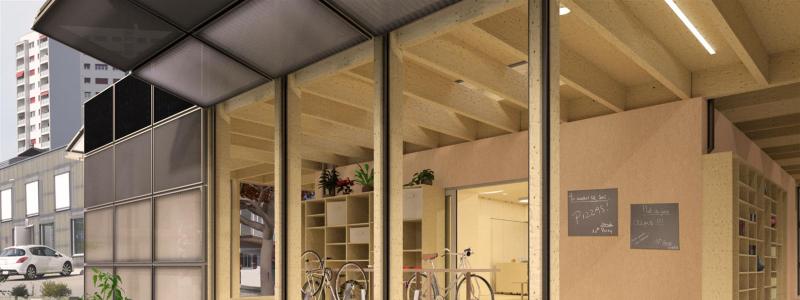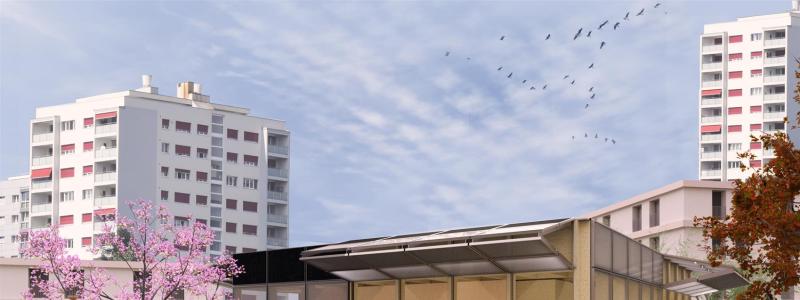Solar Decathlon - Switzerland in pursuit of the house of tomorrow
The US Department of Energy’s Solar Decathlon competition to design and build solar-powered homes is entering its final stage. Switzerland and the Netherlands are the only European groups in the competition. The Swiss team is made up of students from four universities in the French-speaking part of Switzerland and is one of the finalists this year.
Is the future of eco-friendly housing Swiss? That is the dream of around 50 students from the EPFL, the School of Engineering and Architecture of Fribourg (HEIA), the Geneva University of Art and Design (HEAD) and the University of Fribourg. Four schools and three French-speaking cantons have come together under the Swiss banner with one goal – to win the 2017 Solar Decathlon this October. The challenge? To design a 100 m2 fully solar-powered family home. Under the name Swiss Living Challenge, Switzerland’s project – one of the thirteen remaining candidates in the competition – is a blend of architecture, energy efficiency, urban design, mobility and communication.
It is the first time that the Swiss team is taking part in the American competition. The Solar Decathlon was created by the US Department of Energy in 2002 with the aim of promoting solar technology for energy self-sufficient single family homes. Since then the competition has evolved into an ambitious project covering different models of sustainable habitats, water management, market potential and innovation. The Swiss team's project also includes added social and collective value: it offers solutions for communities in energy transition and aims to better respond to their needs.

Outward-looking living spaces
As the name of the competition implies, the projects are judged in ten contests: architecture, market potential, engineering, communications, innovation, water, health and comfort, appliances, home life and energy. The Swiss team started building their pavilion in 2016 in the smart living lab at Fribourg’s Bluefactory innovation park, formerly the Cardinal brewery. After several months of intense work, on 10 March 2017 journalists and project partners were invited to a presentation of the first construction stage – the interior of the solar-powered home.

With its porch area, the wooden interior is intended to have a half-public half-private function as a place for interactive activities, training sessions or even as a repair shop. The idea is to a create an outward-looking living space. The porch has been fitted with all manner of building services and the roof will become covered in vegetation (known as a green or living roof) in order to collect rainwater to use in the house and provide an element of biodiversity. Having completed this major stage in the journey, the Swiss Living Challenge is now ready for the final stretch. Indeed, building and presenting the central part of the solar-powered home has required an enormous amount of coordination and energy. “The first construction is always the most difficult,” says Marilyne Andersen, dean of the EPFL’s School of Architecture, Civil and Environmental Engineering (ENAC). “There are some adjustments to be made, and the central part of the house now has to be dismantled so that it can be reassembled outside where it can be completed – together with the exterior layout and functional outer shell of the building. It’s a key moment, when the students get to practise putting the house back together again.”
The most important reassembly will be at the grand finale of the 2017 Solar Decathlon, which will take place from 5 to 14 October in Denver. But before then, the students had to face another deadline: testing the building's energy efficiency before the project can be completed during a public event which took place on Saturday 10 June 2017. And in order to get there, the students sacrificed a lot more of their free time in order to complete the syllabus.
Four schools, three cantons, one team
The Swiss Living Challenge, which is costing in the region of CHF 4.2 million, is not just a challenge in terms of technology. It has also been a challenge to coordinate all the students’ study programmes and to oversee the collaboration between the different schools and specialisations: “It’s a real achievement to lead this type of venture in an institutional setting,” Andersen points out. “Some students only participate in one part of the project, others in all of them.” The objective is that they all pool their knowledge and ideas to create a coherent whole. “All four schools complement each other in terms of skills,” adds Andersen. “But at this stage in the project, you can no longer tell which student comes from which school. We are just one team. It’s very inspiring.”
Flavia Viscardi agrees. The 27-year-old HEAD graduate coordinates the communication work for the Swiss team’s Solar Decathlon project. “It’s our job to support the architects and engineers. We provide coaching and useful tools for translating their concepts visually or emphasising the theme of a room using visuals.” She adds: “We’re also going to develop a storyline for the house. What story do we want to tell? What impact do we want to have on the public? It’s like scientific mediation, because engineers and architects love to prove that their theorems are right. And we help them to simplify and synthesise all of that, so that the way the project is communicated visually is as intelligent and effective as possible.”
The Swiss team will jet off to Denver on 5 October. Faced against the 11 American and one other European team in the running, Switzerland intends to play its cards right. And it has no shortage of trump cards. “Where we come from, the question of solar-powered homes is in some way no longer an issue. We are building for the long term and focus more on passive strategies than in the US,” Andersen notes. “What makes us different from the American teams is that our solar-powered house has an urban approach and a social dimension. It isn't about a single family home but a community hub that could be found in a Swiss town or a peri-urban region, whether as a centre of innovation or a villa for example.” Will this approach win over the American jury of the 2017 Solar Decathlon? The verdict is on 14 October.







